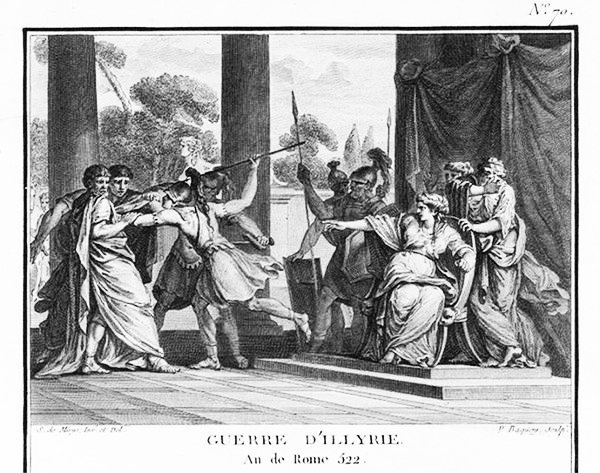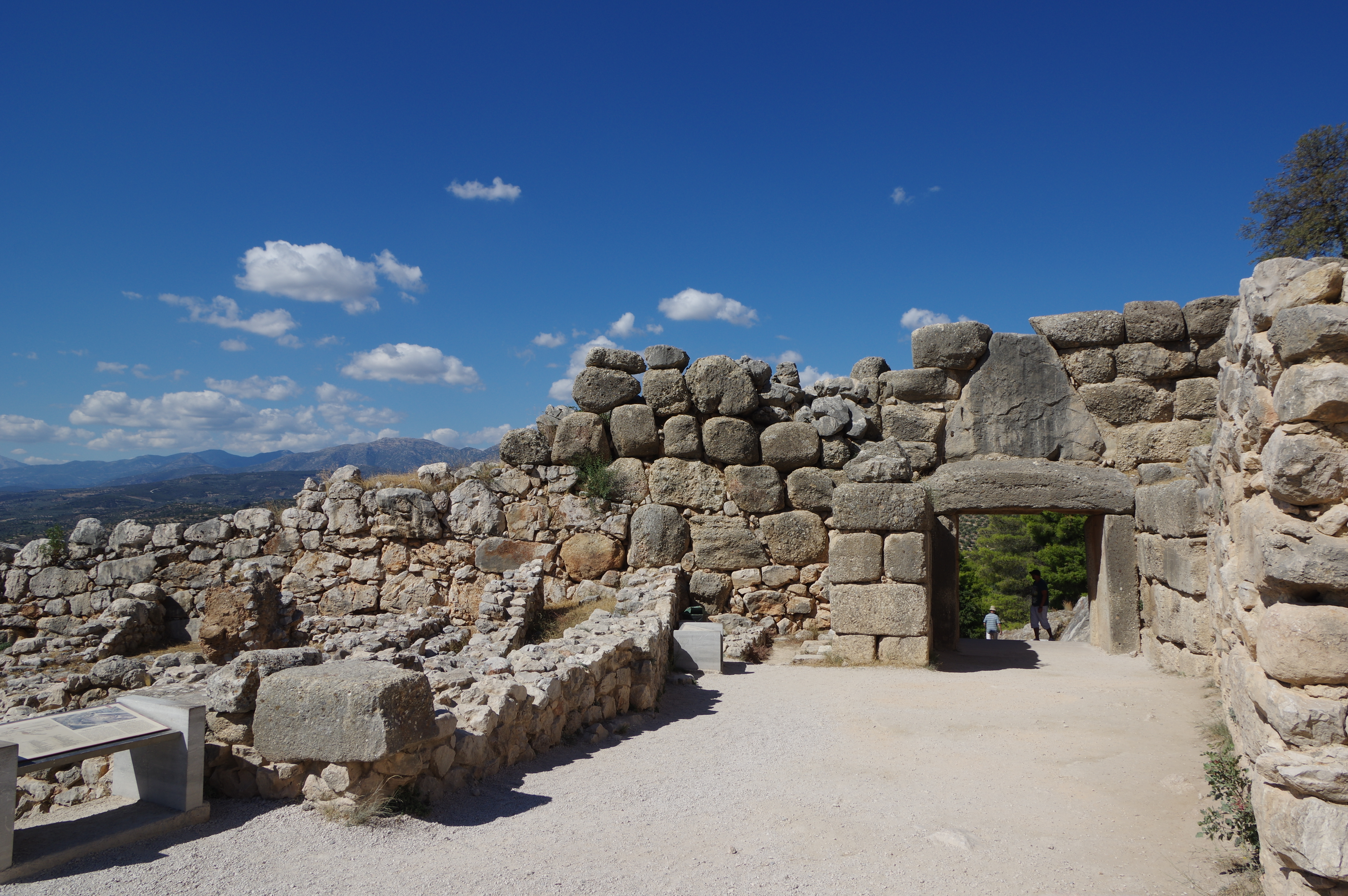|
Daors
Daorson was the capital of the Illyrian tribe of the Daorsi (Ancient Greek Δαόριζοι, Δαούρσιοι; Latin ''Daorsei''). The Daorsi lived in the valley of the Neretva River between 300 BC and 50 BC. They came very early into contact with Greek traders acquiring many facies of Greek civilization, and the town acquired a certain degree of Hellenization. After the peace treaty with Rome in 168/167 BC, the Daorsi minted their own coins. The ruins of Daorson are located at Ošanjići, near Stolac, Bosnia and Herzegovina. History Daorson was built around a central fort or acropolis, surrounded by cyclopean walls made of huge stone blocks (similar to those in Mycenae, in Greece). The acropolis would have housed all of the important administrative, public and religious buildings. The defensive wall extending from southwest to northeast was 65 metres long, 4.2 metres wide, and from 4.5 to 7.5 metres high with doors and towers on both sides. The remnants of numerous wine ... [...More Info...] [...Related Items...] OR: [Wikipedia] [Google] [Baidu] |
Daorson Coin
Daorson was the capital of the Illyrians, Illyrian List of ancient Illyrian peoples and tribes, tribe of the Daorsi (Ancient Greek Δαόριζοι, Δαούρσιοι; Latin ''Daorsei''). The Daorsi lived in the valley of the Neretva River between 300 BC and 50 BC. They came very early into contact with Greek traders acquiring many facies of Ancient Greek civilisation, Greek civilization, and the town acquired a certain degree of Hellenization. After the peace treaty with Roman Republic, Rome in 168/167 BC, the Daorsi minted their own coins. The ruins of Daorson are located at Ošanjići, near Stolac, Bosnia and Herzegovina. History Daorson was built around a central fort or acropolis, surrounded by Cyclopean masonry, cyclopean walls made of huge stone blocks (similar to those in Mycenae, in Greece). The acropolis would have housed all of the important administrative, public and religious buildings. The defensive wall extending from southwest to northeast was 65 metres long, 4 ... [...More Info...] [...Related Items...] OR: [Wikipedia] [Google] [Baidu] |
List Of Ancient Illyrian Peoples And Tribes
This is a list of ancient tribes in the ancient territory of Illyria (; ). The name ''Illyrians'' seems to be the name of a single Illyrian tribe that was the first to come into contact with the ancient Greeks, causing the name Illyrians to be applied to all people of similar language and customs. The locations of Illyrian tribes/peoples prior to the Roman conquest are approximate, as sometimes many wholly different locations are given by ancient writers and modern authors (as in the case of the Enchelei). After the Great Illyrian Revolt, the Romans deported, split, and resettled Illyrian tribes within Illyria itself and to Dacia, sometimes causing whole tribes to vanish and new ones to be formed from their remains, such as the Deraemestae and the Docleatae, some of them mixed with Celtic tribes (see Celticization). Many tribal names are known from Roman and the number of their , formed of the dispersed tribes in Illyria. Illyrian Albani The ''Albanoi, Albani'' (Latinized fo ... [...More Info...] [...Related Items...] OR: [Wikipedia] [Google] [Baidu] |
Illyrians
The Illyrians (, ; ) were a group of Indo-European languages, Indo-European-speaking people who inhabited the western Balkan Peninsula in ancient times. They constituted one of the three main Paleo-Balkan languages, Paleo-Balkan populations, along with the Thracians and Ancient Greece, Greeks. The territory the Illyrians inhabited came to be known as Illyria to later Greek and Roman Republic, Roman authors, who identified a territory that corresponds to most of Albania, Montenegro, Kosovo, much of Croatia and Bosnia and Herzegovina, western and central Serbia and some parts of Slovenia between the Adriatic Sea in the west, the Drava river in the north, the Great Morava, Morava river in the east and the Ceraunian Mountains in the south. The first account of Illyrian people dates back to the 6th century BC, in the works of the ancient Greek writer Hecataeus of Miletus. The name "Illyrians", as applied by the ancient Greeks to their northern neighbors, may have referred to a broad, ... [...More Info...] [...Related Items...] OR: [Wikipedia] [Google] [Baidu] |
Stolac
Stolac ( sr-Cyrl, Столац) is an ancient city located in Herzegovina-Neretva Canton of the Federation of Bosnia and Herzegovina, an entity of Bosnia and Herzegovina. It is located in the region of Herzegovina. Stolac is one of the oldest cities in Bosnia and Herzegovina as well as one of the oldest continuously inhabited cities in the World. Stolac is situated in the area known as Herzegovina Humina on the tourist route crossing Herzegovina and linking the Bosnian mountainous hinterland with the coastal regions of Bosnia and Herzegovina, Dubrovnik, and Montenegro. The road, running from Sarajevo via Mostar, Stolac, Ljubinje, and Trebinje, enables one to reach Dubrovnik in less than 4 hours. Thanks to the town's favourable natural environment, geological composition, contours, climate, hydrographic and vegetation, Stolac and its area have been settled since antiquity. Its rich hunting-grounds along with other natural benefits attracted prehistoric man, and later the Illyri ... [...More Info...] [...Related Items...] OR: [Wikipedia] [Google] [Baidu] |
Bosnia And Herzegovina
Bosnia and Herzegovina, sometimes known as Bosnia-Herzegovina and informally as Bosnia, is a country in Southeast Europe. Situated on the Balkans, Balkan Peninsula, it borders Serbia to the east, Montenegro to the southeast, and Croatia to the north and southwest, with a coast on the Adriatic Sea in the south. Bosnia (region), Bosnia has a moderate continental climate with hot summers and cold, snowy winters. Its geography is largely mountainous, particularly in the central and eastern regions, which are dominated by the Dinaric Alps. Herzegovina, the smaller, southern region, has a Mediterranean climate and is mostly mountainous. Sarajevo is the capital and the largest city. The area has been inhabited since at least the Upper Paleolithic, with permanent human settlement traced to the Neolithic cultures of Butmir culture, Butmir, Kakanj culture, Kakanj, and Vučedol culture, Vučedol. After the arrival of the first Proto-Indo-Europeans, Indo-Europeans, the area was populated ... [...More Info...] [...Related Items...] OR: [Wikipedia] [Google] [Baidu] |
Illyrian Wars
The Illyrian Wars were a series of wars fought between the Roman Republic and the Illyrian kingdom under the Ardiaei and Labeatae. In the ''First Illyrian War'', which lasted from 229 BC to 228 BC, Rome's concern was that the trade across the Adriatic Sea increased after the First Punic War at a time when Ardiaei power increased under queen Teuta. Attacks on trading vessels of Rome's Italic allies by Illyrian pirates and the death of a Roman envoy named Coruncanius on Teuta's orders,Zock, 99. prompted the Roman senate to dispatch a Roman army under the command of the consuls Lucius Postumius Albinus and Gnaeus Fulvius Centumalus. Rome expelled Illyrian garrisons from a number of Greek cities including Epidamnus, Apollonia, Corcyra, Pharos and established a protectorate over these Greek towns. The Romans also set up Demetrius of Pharos as a power in Illyria to counterbalance the power of Teuta.Eckstein, 46–59. The ''Second Illyrian War'' lasted from 220 BC to 219 BC. In 219 ... [...More Info...] [...Related Items...] OR: [Wikipedia] [Google] [Baidu] |
Delmatae
The Dalmatae, alternatively Delmatae, during the Roman period, were a group of Illyrian tribes in Dalmatia, contemporary southern Croatia and western Bosnia and Herzegovina. The region of Dalmatia takes its name from the tribe. The Delmatae appear in historical record for the first time in 181 BC, when upon the death of their ruler Pleuratus III of the Illyrian kingdom, they refused to accept the rule of his son, Gentius and seceded. They expanded and came to include coastal Illyrian tribes like the Tariotes, the Hylli and the Nesti and increased their territory to the north against the Liburni. Conflict with Roman expansionism and its local allies in the eastern Adriatic began in 156–55 BC. The Roman–Dalmatae Wars lasted until 33 BC when Octavian (the later Emperor Augustus) installed Roman hegemony in Dalmatia. Local instability and minor rebellions continued in the province of Dalmatia and culminated in the Great Illyrian Revolt in Dalmatia and closely linked Pannoni ... [...More Info...] [...Related Items...] OR: [Wikipedia] [Google] [Baidu] |
Cyclopean Masonry
Cyclopean masonry is a type of stonework found in Mycenaean architecture, built with massive limestone boulders, roughly fitted together with minimal clearance between adjacent stones and with clay mortar or no use of mortar. The boulders typically seem unworked, but some may have been worked roughly with a hammer and the gaps between boulders filled in with smaller chunks of limestone. The most famous examples of Cyclopean masonry are found in the walls of Mycenae and Tiryns, and the style is characteristic of Mycenaean fortifications. Similar styles of stonework are found in other cultures and the term has come to be used to describe typical stonework of this sort. The term comes from the belief of classical Greeks that only the mythical Cyclopes had the strength to move the enormous boulders that made up the walls of Mycenae and Tiryns. Pliny's ''Natural History'' reported the tradition, attributed to Aristotle, that the Cyclopes were the inventors of masonry towers, giving ... [...More Info...] [...Related Items...] OR: [Wikipedia] [Google] [Baidu] |
Greece
Greece, officially the Hellenic Republic, is a country in Southeast Europe. Located on the southern tip of the Balkan peninsula, it shares land borders with Albania to the northwest, North Macedonia and Bulgaria to the north, and Turkey to the east. The Aegean Sea lies to the east of the Geography of Greece, mainland, the Ionian Sea to the west, and the Sea of Crete and the Mediterranean Sea to the south. Greece has the longest coastline on the Mediterranean Basin, spanning List of islands of Greece, thousands of islands and nine Geographic regions of Greece, traditional geographic regions. It has a population of over 10 million. Athens is the nation's capital and List of cities and towns in Greece, largest city, followed by Thessaloniki and Patras. Greece is considered the cradle of Western culture, Western civilisation and the birthplace of Athenian democracy, democracy, Western philosophy, Western literature, historiography, political science, major History of science in cl ... [...More Info...] [...Related Items...] OR: [Wikipedia] [Google] [Baidu] |
Plateau
In geology and physical geography, a plateau (; ; : plateaus or plateaux), also called a high plain or a tableland, is an area of a highland consisting of flat terrain that is raised sharply above the surrounding area on at least one side. Often one or more sides have deep hills or escarpments. Plateaus can be formed by a number of processes, including upwelling of volcanic magma, extrusion of lava, and erosion by water and glaciers. Plateaus are classified according to their surrounding environment as intermontane, piedmont, or continental. A few plateaus may have a small flat top while others have wider ones. Formation Plateaus can be formed by a number of processes, including upwelling of volcanic magma, extrusion of lava, plate tectonics movements, and erosion by water and glaciers. Volcanic Volcanic plateaus are produced by volcanic activity. They may be formed by upwelling of volcanic magma or extrusion of lava. The underlining mechanism in forming p ... [...More Info...] [...Related Items...] OR: [Wikipedia] [Google] [Baidu] |
Caravantius
Caravantius, an Illyrian, was half brother to Gentius, the last Illyria In classical and late antiquity, Illyria (; , ''Illyría'' or , ''Illyrís''; , ''Illyricum'') was a region in the western part of the Balkan Peninsula inhabited by numerous tribes of people collectively known as the Illyrians. The Ancient Gree ...n king of the Ardiaean State. In 168 BC he foughtThe Illyrians by J. J. Wilkes, 1992, , page 174, "... Illyrian navy sent to attack supply-routes, and the story resumes with Gentius trapped in Scodra and hoping for relief from Caravantius. ..." with his brother against the Cavii. References Bibliography *''The Illyrians'' by J. J. Wilkes, 1992 Illyrian people {{europe-royal-stub ... [...More Info...] [...Related Items...] OR: [Wikipedia] [Google] [Baidu] |








